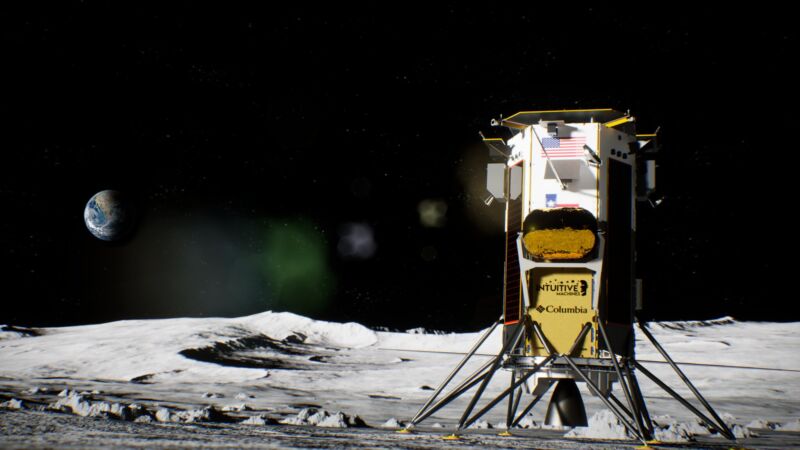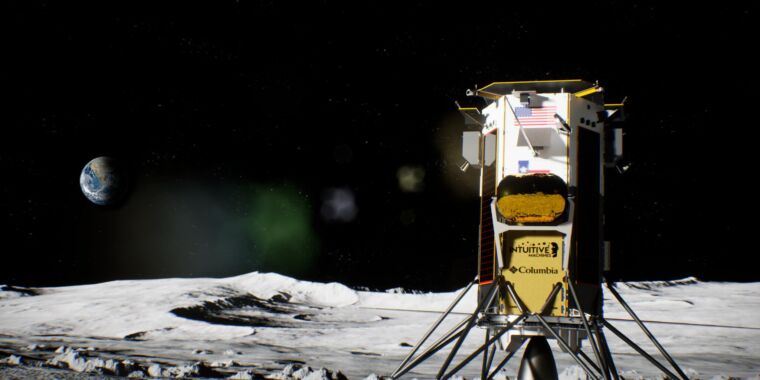
Intuitive Machines
A company building spacecraft to land on the Moon announced Friday that it would go public as it seeks to expand the services it provides in the lunar environment.
Intuitive Machines, based in Houston, said it would combine with a special purpose acquisition company named Inflection Point Acquisition Corp. The transaction will close in about four months, with the new company named Intuitive Machines and trading on the NASDAQ exchange under the symbol LUNR.
Steve Altemus, co-founder, president, and CEO of Intuitive Machines, said going public would raise between $100 million and $400 million in new capital for the company, which would have an equity value of about $1 billion.
“Intuitive Machines is a first mover in commercializing cislunar space,” Altemus said in an interview with Ars. “As we looked at extending our lead, and laying in the infrastructure around cislunar space, it was time to take on capital. This really gives the financial resources to take the next steps.”
Areas of expansion
Altemus cited three primary areas in which Intuitive Machines seeks to grow beyond its initial business, which is placing scientific and commercial payloads up to 130 kg on the surface of the Moon with its “Nova-C” lander.
With additional funding now, the company will be able to start working on the larger “Nova-D” lander, Altemus said, which is expected to be capable of landing 500 to 750 kg on the Moon, making it eligible for NASA’s Discovery class missions, as well as much larger cargo missions.
Additionally, Intuitive Machines will work to develop a radioisotope heater for its landers to allow them to survive the “lunar night.” For nearly the entire lunar surface, a single day in sunlight lasts 14 Earth days, and the night 14 more days. Because it gets so cold in the dark, spacecraft must adopt special measures on the Moon to survive in this environment. Altemus said making provisions to survive the long lunar night would significantly increase the value of scientific and commercial payloads carried on Nova landers.
The company also wants to build a constellation of five satellites in lunar orbit to provide precise position information about assets on the surface of the Moon and 24-hour communication between spacecraft there and mission operators on Earth. Intuitive Machines plans to use the network to provide these services for its own landers, as well as offering them to other companies and governments. Finally, Intuitive Machines is also studying the potential for lunar sample return and satellite servicing.
All of these initiatives are predicated on Intuitive Machines being successful with its core business, landing safely on the Moon. This is no small feat. No US spacecraft have made a soft landing on the Moon in nearly 50 years, when NASA’s Apollo 17 mission touched down, and no private company has ever landed safely there.
Private Moon landings
As part of a multi-pronged approach to get back to the Moon with humans, under the auspices of the Artemis program, NASA is paying several US companies to deliver precursor science missions to study potential landing areas and gather other data.
Intuitive Machines has been one of the most successful companies in winning contracts through this Commercial Lunar Payload Services program, and is flying three missions for NASA in the next few years with its Nova-C lander. Each of these three landers will carry a variety of scientific experiments for NASA as well as privately bought payload slots. Altemus said the company has also sold a purely commercial mission, called IM-4, to fly after the first three NASA-sponsored missions.
The company’s first mission, IM-1, recently slipped from the end of 2022 into the first quarter of 2023. Launching on a Falcon 9 rocket, IM-1 has been delayed more than two years by various problems, including an issue with the vehicle’s propellant tanks, which failed during qualification testing. However that problem has been resolved, and the spacecraft is now in final assembly, Altemus said.
The new delay into 2023, he said, was partly driven by a request from NASA to change the landing site from an equatorial region to the Moon’s South Pole. This will necessitate more planning and preparation, as the poles are more challenging to reach. NASA made the change to bring the IM-1 mission closer to where it intends to land humans, as part of the Artemis III mission later this decade.
“We’ve done all the analysis, and we’ve done all the design work to get to the South Pole,” Altemus said. “So we know we can land there on our first mission. That’s taken us a couple of more months. But the spacecraft is doing great.”








